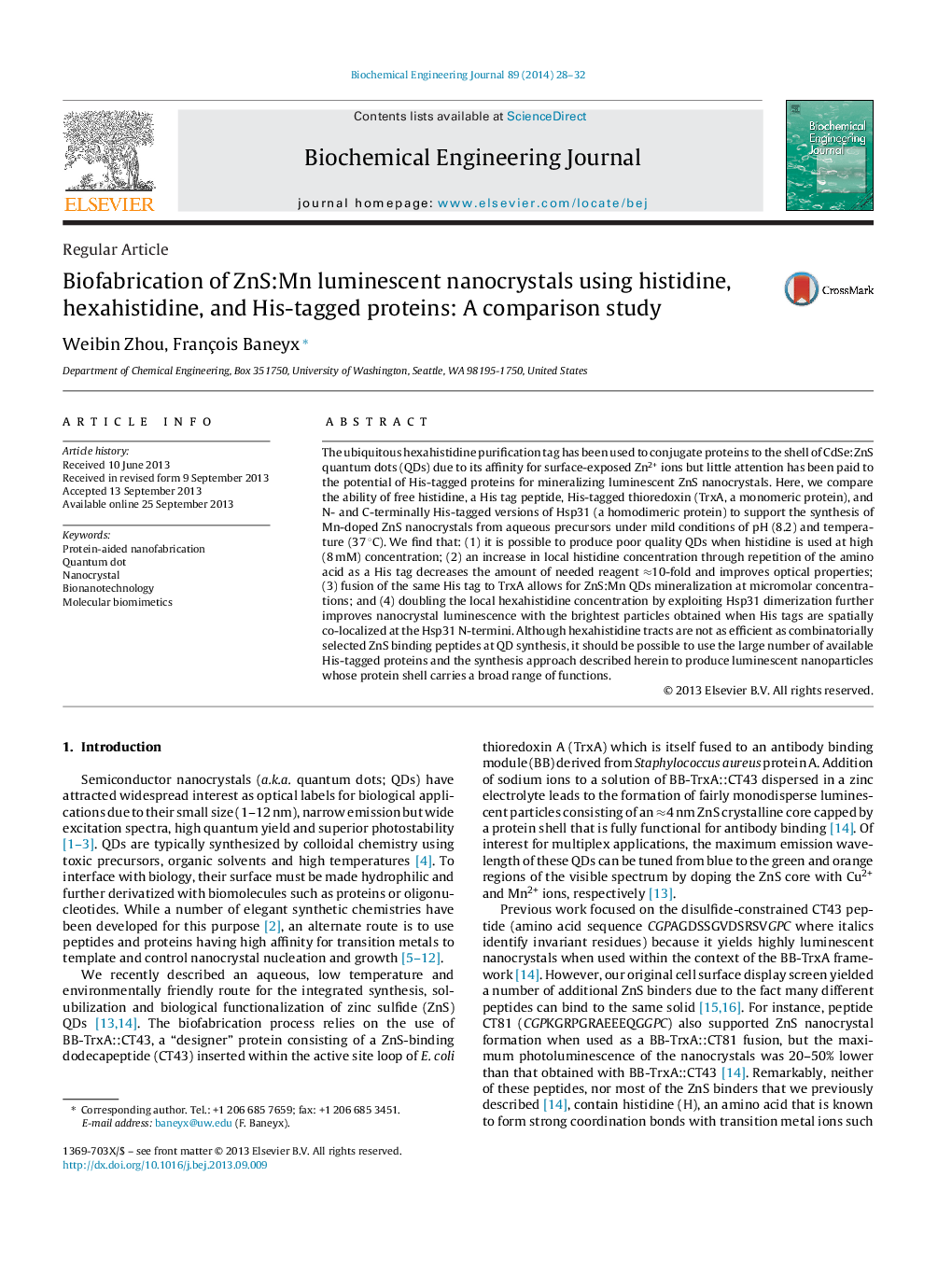| کد مقاله | کد نشریه | سال انتشار | مقاله انگلیسی | نسخه تمام متن |
|---|---|---|---|---|
| 3144 | 152 | 2014 | 5 صفحه PDF | دانلود رایگان |

• We show that His-tagged proteins can mineralize ZnS:Mn QDs.
• Increasing histidine local concentration improves QD optical quality.
• Increasing histidine spatial proximity improves QD optical quality.
The ubiquitous hexahistidine purification tag has been used to conjugate proteins to the shell of CdSe:ZnS quantum dots (QDs) due to its affinity for surface-exposed Zn2+ ions but little attention has been paid to the potential of His-tagged proteins for mineralizing luminescent ZnS nanocrystals. Here, we compare the ability of free histidine, a His tag peptide, His-tagged thioredoxin (TrxA, a monomeric protein), and N- and C-terminally His-tagged versions of Hsp31 (a homodimeric protein) to support the synthesis of Mn-doped ZnS nanocrystals from aqueous precursors under mild conditions of pH (8.2) and temperature (37 °C). We find that: (1) it is possible to produce poor quality QDs when histidine is used at high (8 mM) concentration; (2) an increase in local histidine concentration through repetition of the amino acid as a His tag decreases the amount of needed reagent ≈10-fold and improves optical properties; (3) fusion of the same His tag to TrxA allows for ZnS:Mn QDs mineralization at micromolar concentrations; and (4) doubling the local hexahistidine concentration by exploiting Hsp31 dimerization further improves nanocrystal luminescence with the brightest particles obtained when His tags are spatially co-localized at the Hsp31 N-termini. Although hexahistidine tracts are not as efficient as combinatorially selected ZnS binding peptides at QD synthesis, it should be possible to use the large number of available His-tagged proteins and the synthesis approach described herein to produce luminescent nanoparticles whose protein shell carries a broad range of functions.
Figure optionsDownload as PowerPoint slide
Journal: Biochemical Engineering Journal - Volume 89, 15 August 2014, Pages 28–32